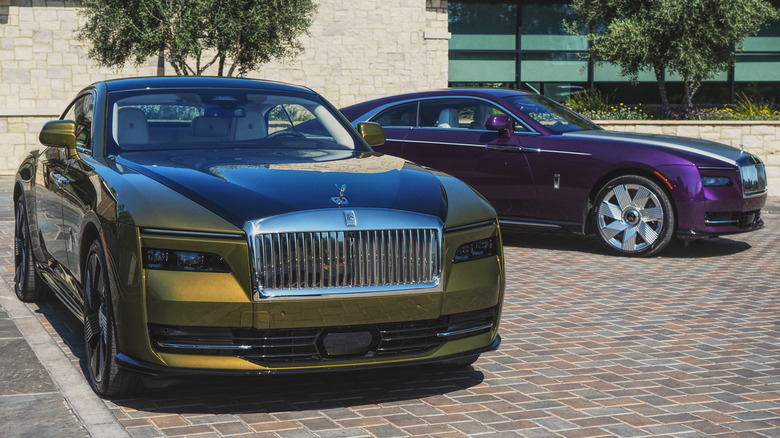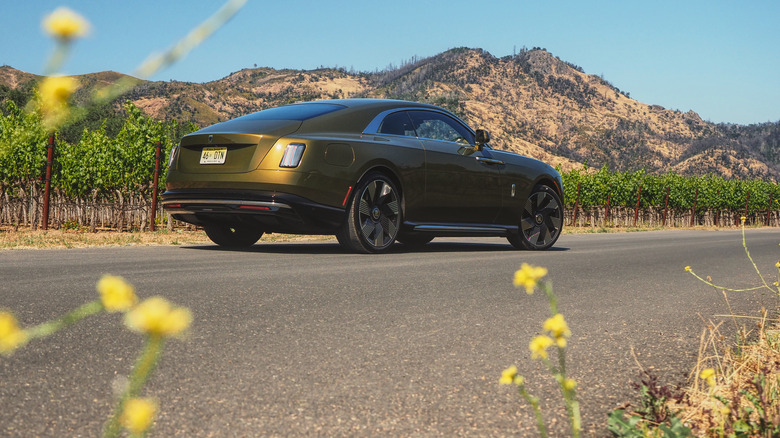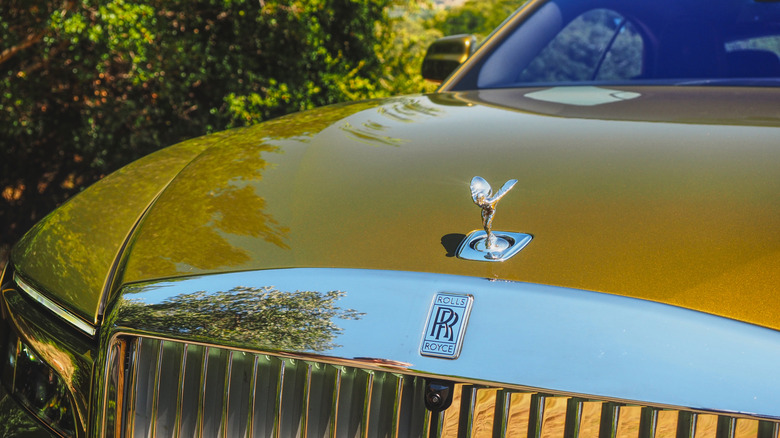Why Rolls-Royce Intentionally Made Its First EV Accelerate Slower
If there's one way to convince an electric car skeptic, it's usually to get them behind the wheel and tell them to plant their right foot to the floor. While EVs may not have the traditional soundtrack of a V6 or V8 gas engine, their electric motors have a huge advantage compared to internal combustion — no waiting around for power to be delivered.
In fact, the torque from an electric motor can arrive almost instantaneously. It's a talent we've seen many automakers take advantage of to add ridiculously swift acceleration to their vehicles. Tesla's Model S Plaid is a particularly speedy example, yes, but Porsche's Taycan, Lucid's Air, and Mercedes-AMG's EQS can all rocket from 0-60 mph in very short order.
With a starting price of $420,000 — and the expectation that well-heeled shoppers will undoubtedly add tens of thousands of dollars of options and extras, at the very least — you'd be forgiven for thinking that the Rolls-Royce Spectre would be wildly fast, too. After all, its dual electric motors bring a hefty 584 horsepower and 664 lb-ft of torque to the party. In fact, though, the British automaker intentionally dialed back what its first fully electric car can do when it comes to straight-line speed.
It's fast, but not as fast as it could've been
To be fair, the Spectre's 0-60 mph time is hardly embarrassing. Officially, it'll take just 4.4 seconds to hit sixty miles per hour: not bad at all for something with a curb weight not far off that of a Ford F-250 Super Duty. For Rolls-Royce, though, that sort of acceleration was an example of careful compromise.
In fact, the automaker modeled Spectre's acceleration on how its existing V12 gas cars, like the Black Badge Ghost and Cullinan, perform when driven aggressively. "All other manufacturers are rocketing the car," Dr. Mihiar Ayoubi, Director of Engineering at Rolls-Royce, explains. "We put an artificial delay into the electric drive, because it should feel natural. The car should accelerate waftably."
Hang around Rolls-Royce engineers for a while, and you'll hear words like "waftably" a lot. It's the automaker's preferred definition for how its cars glide over the road, almost like they're flying.
Owners expect a certain Rolls-Royce ride
That sensation — which Dr. Ayoubi describes as though the body of the car is "sky-hooked" off the road — is something Rolls-Royce owners associate with the brand and wouldn't be willing to compromise on.
"The refinement of Rolls-Royce needs a deep understanding of our clients," the engineering chief says, "what they like, what they dislike." And what counts as a dislike is any sort of aggressive body movement.
So, Spectre was designed to avoid the back end hunkering down when you hit the accelerator and to prevent the nose from dipping when you brake. Even in one-pedal driving mode, where the regenerative braking is more potent, Rolls-Royce has carefully balanced stability with slowing power. "Our Spirit of Ecstasy," Dr. Ayoubi says, referring to the winged mascot atop Spectre's sizable grille, "is not allowed to dive once at a traffic stop."
Rolls-Royce isn't the only automaker in the process of shifting to EVs to consider how dramatic acceleration might make those inside the car feel. Bentley's upcoming fully-electric vehicle isn't expected until 2025, but the automaker's chief executive is already on record promising owners will be able to tame the otherwise "brutal acceleration" of its first full EV.


